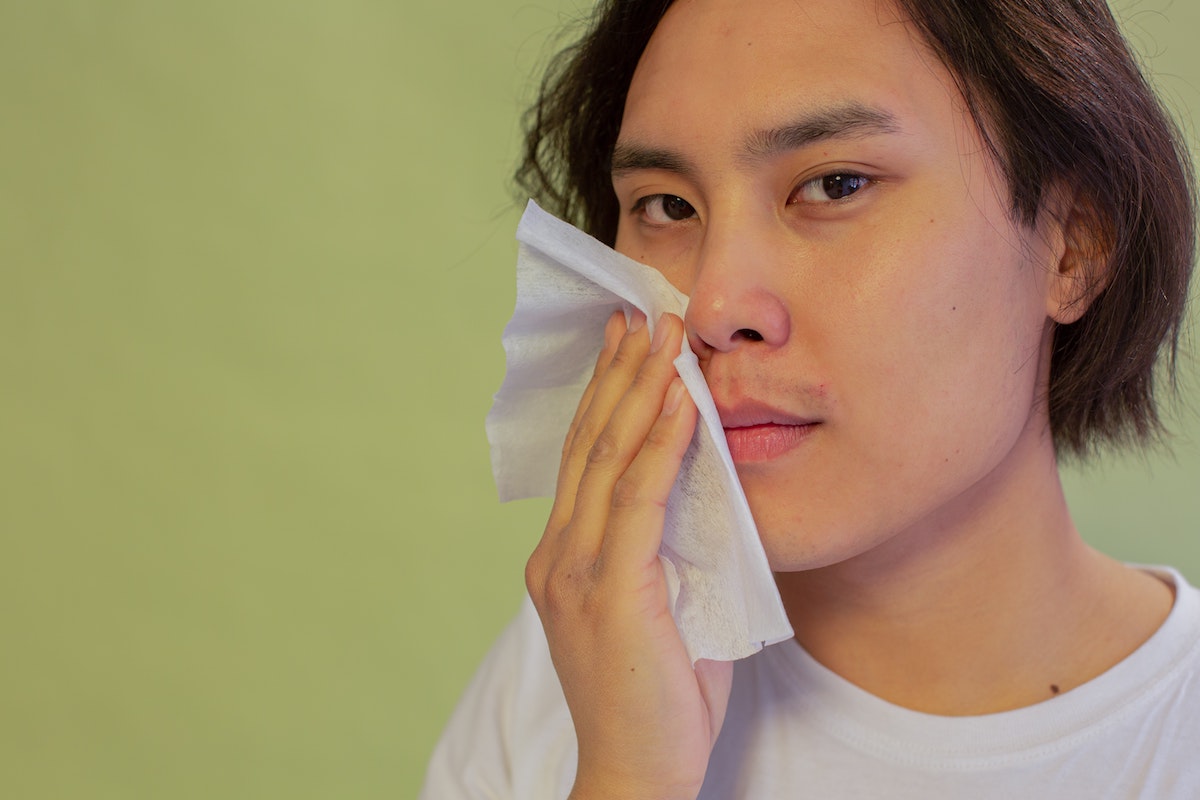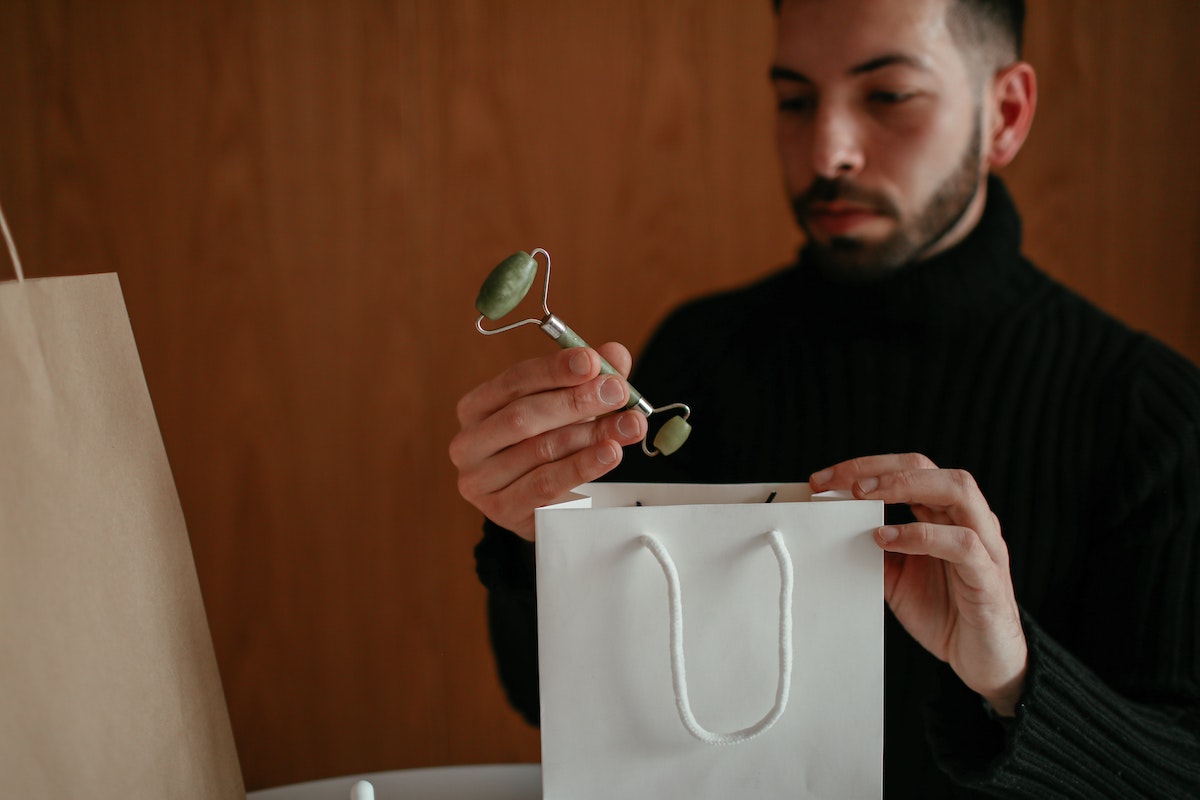Your morning routine may look something like this: You hit snooze a several times before finally rolling out of bed. You hop in and out of the shower, quickly washing your face with soap and lukewarm water. Then, you get dressed and go.
It seems to work — you get to the office in the nick of time. We get that you’re tired and busy, but experts say your skin needs more TLC than that.
“On average, men will prefer to have a more simple skincare routine than women, but that doesn’t mean that the bar of soap in the shower will cut it,” says Dr. Dustin Portela, an Idaho-based board-certified dermatologist.
A good morning skincare routine isn’t simply about looking refreshed for the next few hours. It sets you up for long-term skin success. Experts explained why and the essential morning skincare routine steps.

Why your morning skincare routine matters
It may seem like another item on an already-long to-do list, but the right morning skincare routine can be preventative and restorative.
“Generally, most people suffer from the same skin issues: Dehydration, dry or dull complexion, aging, and dark spots/hyper-pigmentation,” says Dr. Gary Goldfaden, a board-certified dermatologist with Goldfaden MD. “All of these can be easily treated once the proper regimen is in place. But, with so many products available on the market, how do we choose what is best for us?”
The skincare aisle at a local drugstore can feel incredibly overwhelming and intimidating with all the products and ingredients. However, choosing the right morning skincare routine doesn’t have to be complicated. Experts helped you cut through the marketing jargon and provided the best skincare routine order.

The best skincare routine
You can split your skincare routine into two buckets: non-negotiables and nice-to-haves, so you can prioritize as you see fit.
Essential skincare routine steps
Experts agree: These three steps are necessary to any morning skincare routine. Here’s the skincare routine order everyone should follow.
Cleanse
The first step to any morning skincare routine is washing your face, but soap and water won’t do. Opt for a cleanser that’s right for your skin type.
“If you have oily skin, choose a foaming or gel cleanser that will remove excess oil,” Dr. Portela says. “Avoid cleansers with strong fragrances as they could lead to irritation. If you have normal or dry skin, a gentle cleanser is preferred. These may look more like a cream or a milky cleanser.”
Moisturize
Heidy Urra, the leading medical aesthetician and skincare expert at Miami Plastic Surgery, said that after cleansing, you should “apply a toner to help balance the skin’s pH levels and prepare the skin for the rest of the routine” and then “apply a lightweight, oil-free moisturizer to hydrate and protect the skin.”
Apply sunscreen
Finally, protect your skin by putting on sunscreen — yes, even in the winter.
“Arguably, the most important step of any regimen is sun protection,” says Dr. Goldfaden. “The sad truth is you can put any serum or treatment on your skin, but if you’re not wearing an SPF, it is all in vain… Sun is the leading cause of premature aging, wrinkles, dark spots, and overall dull, aged complexion.”
Dr. Portela says he sometimes hears pushback from men who dislike the greasy feel or smell of sunscreen.
“This is why my most common recommendation for men’s sunscreen is the Mantl Invisible Daily SPF,” Portela says. “The gel texture is easy to spread on the skin with no clumping or white cast. Also, it has a pleasant and subtle masculine fragrance.”
Nice-to-have skincare routine steps
Add these items to your morning skincare routine if you have the time or desire.
Get some vitamin C
Vitamin C is a noted part of a healthy diet. However, it’s also a common and effective skincare ingredient.
“If you have the time to add in an extra step, I recommend using an antioxidant serum with vitamin C,” Dr. Portela says. “There are many brands available to choose from. Treat the entire face, including the under-eye skin.”
Exfoliate
Dr. Goldfaden suggests regular exfoliation.
“Regular exfoliation removes dead skin cells revealing fresher, brighter skin,” Dr. Goldfaden says. “Exfoliation also helps to remove dark spots caused by sun damage, scarring, or hormones.”
Exfoliants can be physical or chemical. Dr. Goldfaden says that chemical exfoliants are popular right now.
“When choosing a peel, start with a less aggressive acid as many can be aggressive,” he says.
You’ll want to talk to your dermatologist. For some skin types, it can be irritating. A dermatologist can help you find the best frequency and products for your skin.

Bottom line
The morning skincare routine you choose is important. Even the order of steps is essential to ensure the ingredients and products have the desired effects. Cleansing, moisturizing, and daily application of SPF are all essential for keeping skin clean, hydrated, and safe from the sun. Many men also shave and should do so after cleansing and moisturizing to reduce razor burn risks. Regular exfoliation and a vitamin C serum can also reduce dullness and under-eye issues. Your dermatologist is your best resource for product recommendations. If you notice any product is causing irritation, cease use and give your provider a call.
Editors' Recommendations
- The 7 best sea salt sprays for men
- The 15 best 2-in-1 shampoo and conditioners to shorten your shower time
- Can you actually regrow hair? The experts tell us the truth
- It’s time to change your skincare routine: Experts reveal tips and tricks for summer
- The conversation you need to have with your barber before a haircut, according to stylists




